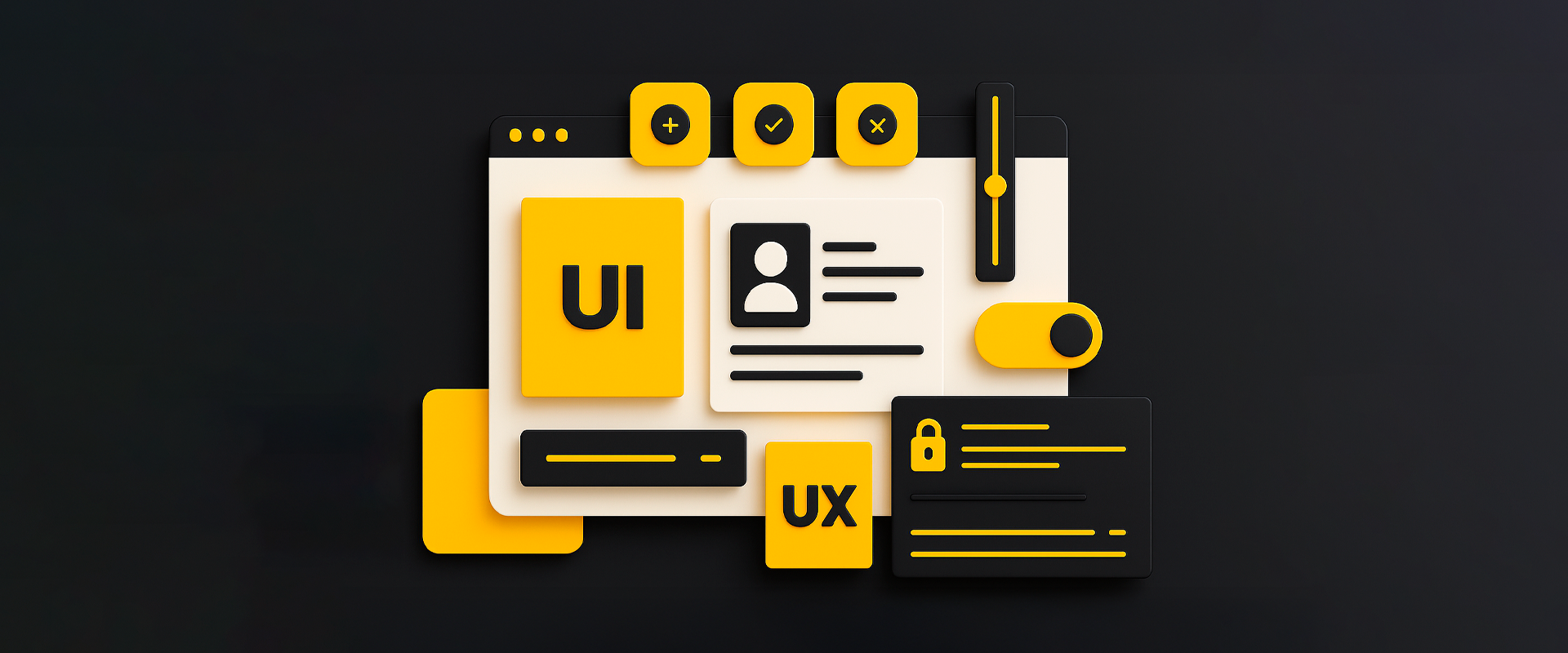UX, UI, and graphic design get mixed up all the time, even though each one shapes a different part of the digital experience. When teams treat them as the same, projects lose clarity, and the end result feels off.
Defining these roles brings order, keeping everyone in sync speeds up decision-making, and helps ensure the final product is smoother, sharper, and more integrated. Good design is not only what people see. It starts with knowing who does what.
UX Design: Structuring the Experience
UX design controls the way individuals move around a digital product. It is interested in structure, intent, and clarity. Every action should be smooth and enable the user’s subsequent action. A UX designer creates this flow by research, user journeys, and wireframes.
Their methodology begins even before there is a visual design starting with listening, interviews, feedback, and observations. What are people trying to do? Where are they getting stuck? What makes the experience more intuitive? These lessons don’t stop with structure they transfer to the language users read. UX writing plays a crucial role in helping users glide smoothly through digital interfaces.
UX design removes friction by guiding the user without being visible. Users don’t notice the structure at all when done well, they just move forward. That’s the sign of smart design—a well-built path from start to finish, not flash or decoration.
UI Design: Building the Interface
UI design lends shape to structure. A UI designer decides how each element looks and how it behaves—from buttons and menus to cards and input fields. Their end goal is to create a simple, clear, and consistent interaction across the whole interface.
While UX maps it out, UI sets the tone. Visual hierarchy, spacing, alignment, and responsiveness are all encompassed by this role, and every element should guide the user’s eye and lead them to the next step. .
UI design is also responsible for accessibility and visual clarity. Done well, it leaves users feeling assured, not bewildered. Excellent interfaces do not merely appear nice—they function purposefully and precisely at every step.
Graphic Design: Speaks the Brand
Graphic design dictates how a brand looks, feels, and communicates across all the visual touch points. It brings shape to identity via imagery, composition, and creative direction—not just on a site, but in marketing, print, and social media. This role is as much about storytelling, feeling, and recognition.
A graphic designer employs color, composition, and concept to craft assets that are in line with the message of the brand. Unlike UX or UI, graphic design focuses on shaping perception rather than guiding interaction or flow.
Their work gives a brand personality and connects the product to a larger visual system. When done well, Graphic design makes a brand memorable long before anyone clicks a button or reads a line of copy.
Where They Overlap and Where They Don’t
UX sets the foundation, UI builds the interface, and graphic design sets the appearance that supports the brand. They all play a role in how users interact with the final product.
They converge at critical handoff points, where the UX designer charts the flow, the UI designer turns it into a working interface, and the graphic designer adds visual aids that support the message. Each step builds on the last.
Overlap is inevitable, but confusion is wasteful. Clearly defined boundaries allow for better collaboration, stronger decisions, and more efficient creative process end-to-end.
Why the Separation of These Roles Impedes Projects
As UX, UI, and graphic design are tackled as one task, projects are brought to a halt. Designers end up solving the wrong issues, visuals lack purpose, and product choices get lost. Time is lost on unnecessary revisions that could have been avoided by segregated role assignments.
A graphic designer can create something beautiful that ignores user flow. A UX designer can build a logical order that does not express brand. A UI designer can try to close both gaps, crossing the limits of his work.
Establishing the boundaries defined prevents that. They permit individual specialists to do what they are best at, which leads to faster work, fewer errors, and digital experiences honed from the start.
How Big Drop Combines UX, UI, and Graphic Design
Creative web design considers UX, UI, and graphics as discrete pieces of one bundled process within Big Drop. Both are done by a specialist, but the work is tightly integrated from the start. Research and structure precede UX. UI takes that structure and turns it into an interface. Graphic design adds the creative stuff that builds the brand.
We don’t muddy the waters or assume someone can do everything. Instead, we create clear handoffs, shared tools, and close coordination between disciplines. That’s how we create digital experiences that are not only functional and visually consistent but also tailored to the people who use them.
Build a product that works as well as it looks. Start your project with the right team.
